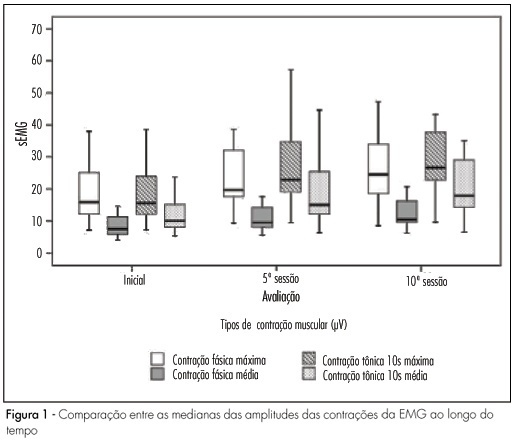You searched for:"Virginia Pianessole Piassarolli"
We found (1) results for your search.Summary
Revista Brasileira de Ginecologia e Obstetrícia. 2010;32(5):234-240
DOI 10.1590/S0100-72032010000500006
PURPOSE: to evaluate the effect of pelvic floor muscle training (PFMT) on female sexual dysfunctions. METHODS: twenty-six women with a diagnosis of sexual dysfunction (sexual desire, arousal, orgasmic disorders and/or dyspareunia) were included in a clinical trial with a before/after approach . The assessment was carried out before, during (after five sessions) and at the end of the treatment (after ten sessions) by two-digit palpation (assessment of pelvic floor muscle, PFM, strength), intravaginal electromyography (EMG) (capture of PFM contraction amplitudes) and Female Sexual Function Index (FSFI, a questionnaire for the evaluation of sexual function). The women underwent PFMT in different positions for ten sessions (once or twice a week). For statistical analysis, absolute and relative frequencies were used for clinical characteristics and PFM strength. The Friedman test was used to compare the FSFI domain scores and EMG values, the Students t-test was used to determine the association between these values and the characteristics of the women, and the Wilcoxon test for percent modification of the EMG. The Mann-Whitney test permitted us to compare these values with clinical characteristics. The Spearman correlation test was used to correlate the EMG values with mean total score. Results were considered statistically significant if p<0.05. RESULTS: a significant improvement (p<0.0001) of FSFI scores was observed at the end of treatment compared to the values observed before and in the middle of treatment. Regarding the EMG, the amplitudes of tonic and phasic contractions increased significantly during treatment (p<0.0001). Pelvic floor strength increased, which 69% of the women presenting grade 4 or 5 at the end of treatment, with a total improvement of sexual complaints. CONCLUSIONS: the PFMT improved muscle strength and electromyography contraction amplitudes, with improved sexual function, indicating that this physiotherapy approach may be successfully used for the treatment of female sexual dysfunctions.
